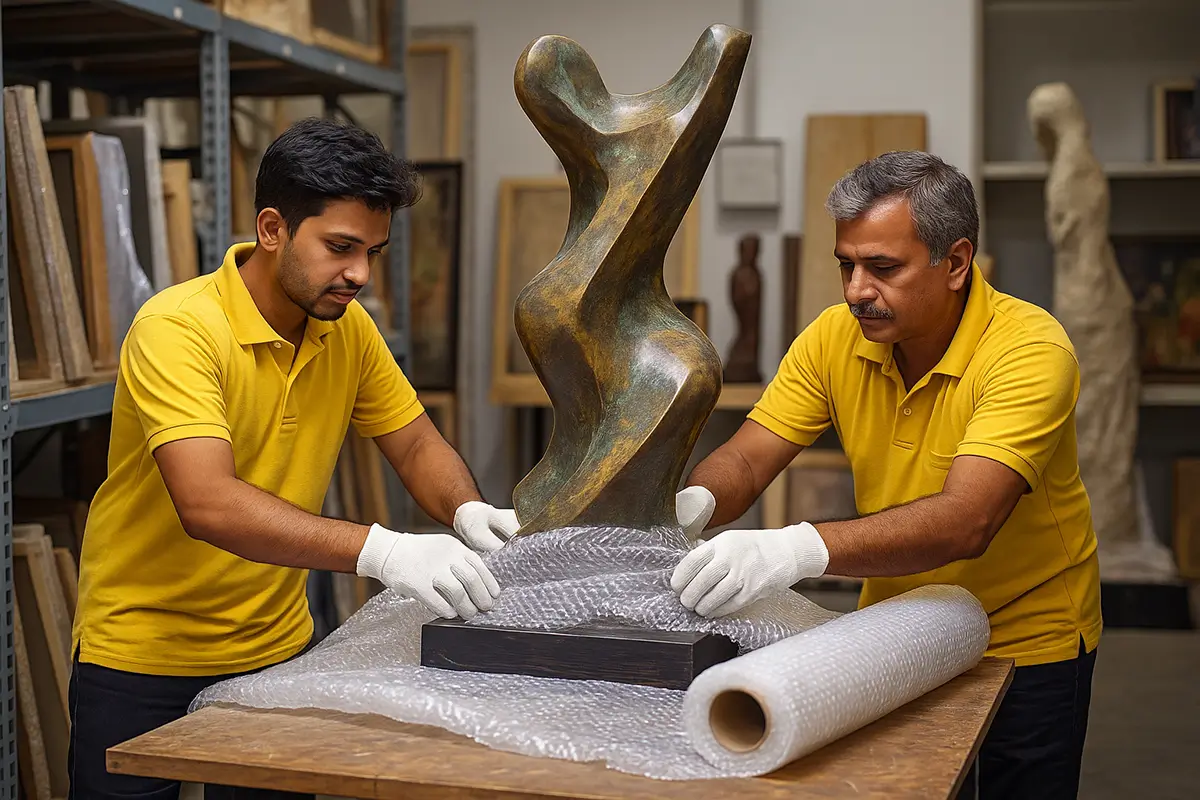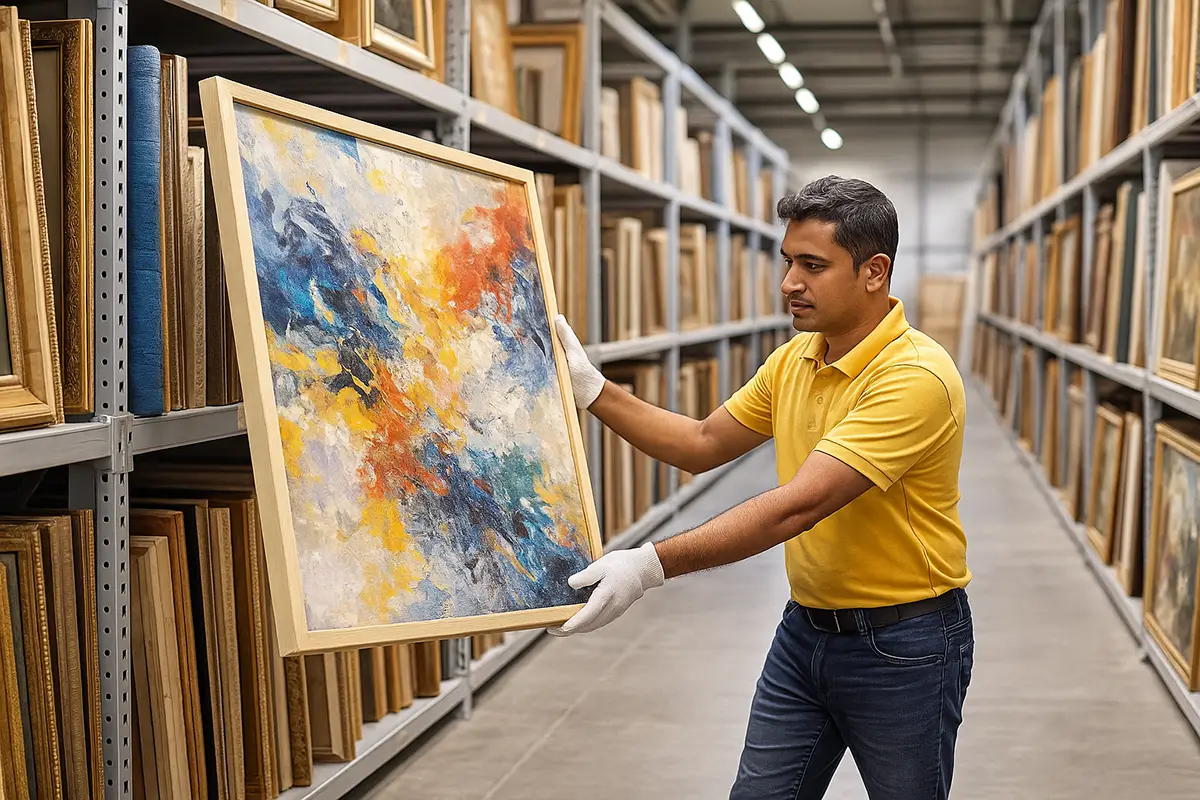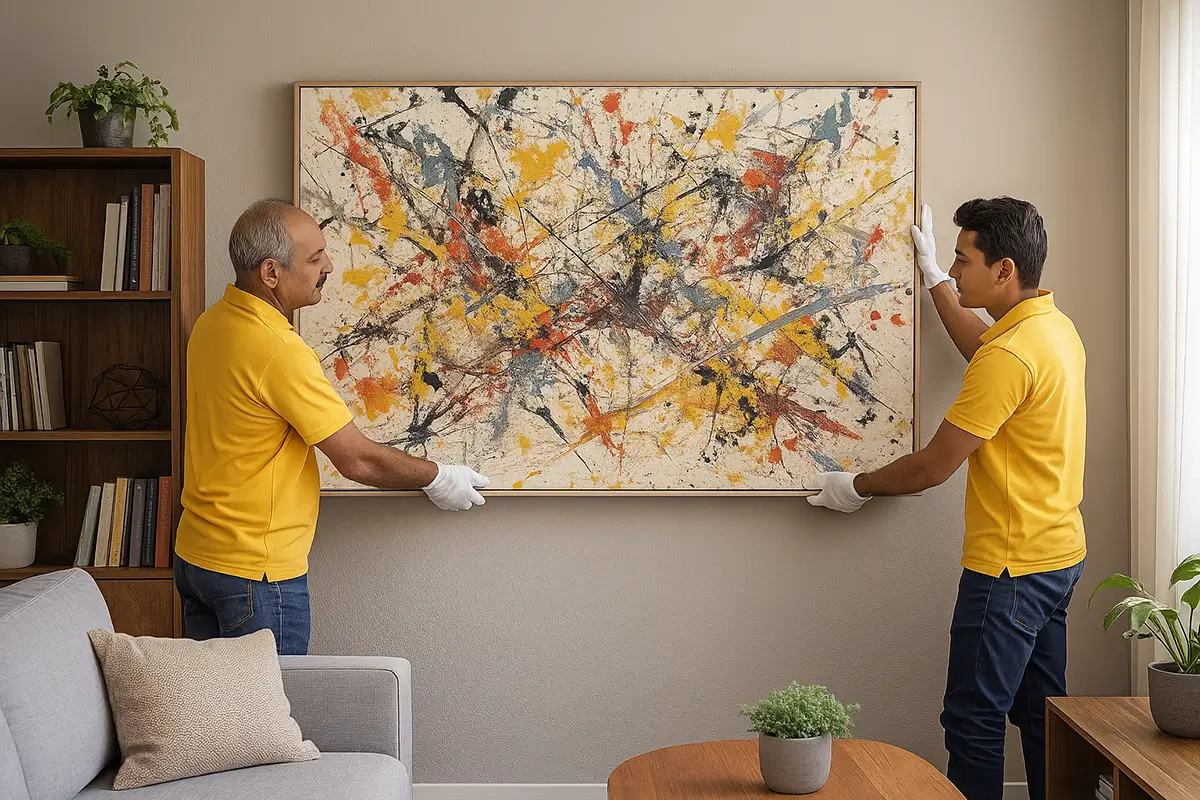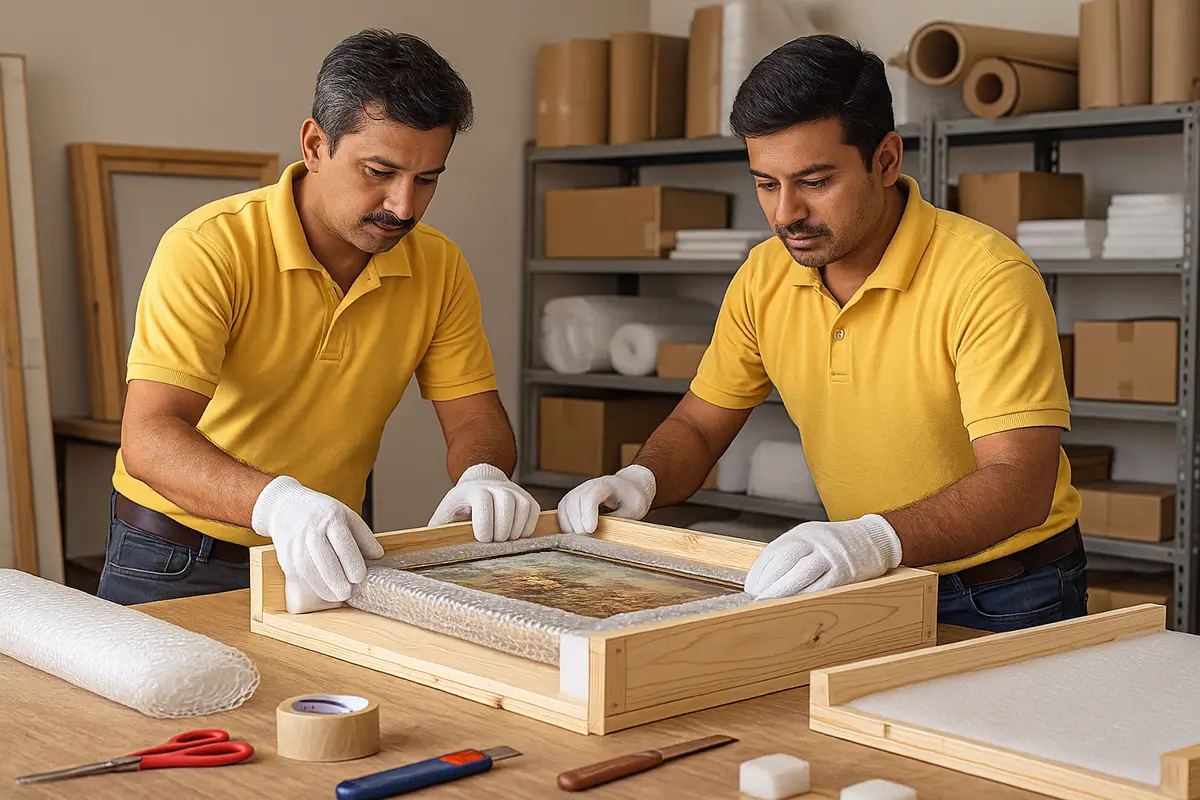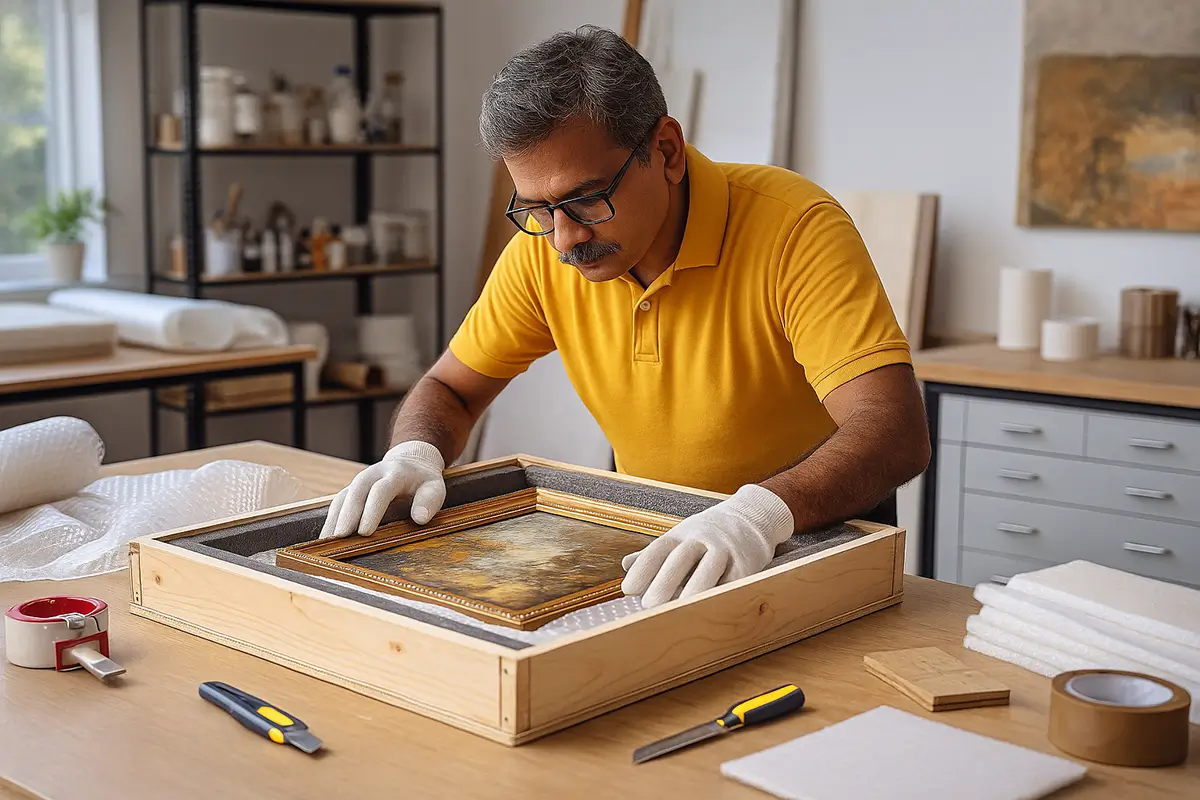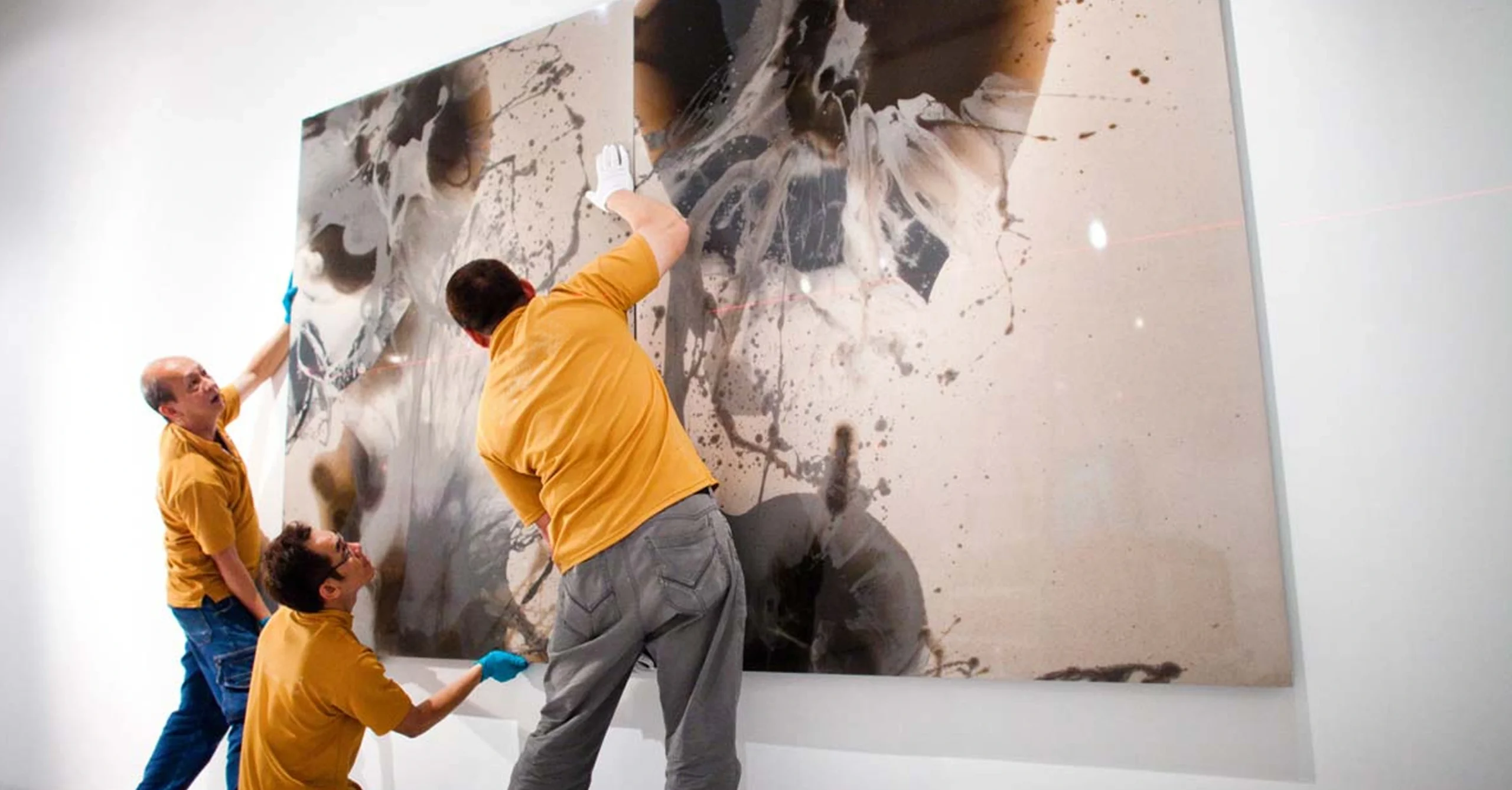Introduction: The invisible revolution in moving art
When collectors, galleries, or corporates think of art logistics, the images that come to mind are usually wooden crates, climate-controlled vans, and careful handlers wearing gloves. What often goes unnoticed is the quiet revolution underway in the background—technology.
From blockchain provenance to IoT sensors and AI-powered valuations, digital tools are transforming how artworks are tracked, insured, transported, and safeguarded. In India, where art logistics faces additional hurdles of climate, infrastructure, and regulatory complexity, technology is becoming the game-changer.
This article explores the digital innovations reshaping art logistics and how they are helping Indian collectors and institutions move from reactive risk management to proactive cultural stewardship.
Why technology matters in art logistics
Art logistics has always been high-stakes. A single crack on a canvas, or a misplaced customs declaration, can cost crores. Traditional practices relied heavily on manual records, paper documentation, and trust-based provenance. But as artworks now move across borders more frequently—and as their financial value rises—manual systems are no longer enough.
Technology adds:
- Transparency: Every step, from packing to customs clearance, is digitally logged.
- Accountability: Handlers, insurers, and owners share verifiable records.
- Efficiency: Faster clearances and reduced delays.
- Protection: Real-time monitoring of temperature, humidity, and handling.
In short, technology makes logistics smarter, safer, and more defensible.
Digital tools transforming art logistics
1. Blockchain for provenance and customs
One of the biggest challenges in art logistics is provenance—the record of ownership and authenticity. Fake documents or lost histories create compliance risks. Blockchain technology addresses this by creating tamper-proof digital ledgers of ownership and movement.
- Every transaction—acquisition, valuation, transport—is time-stamped and immutable.
- Customs authorities can access transparent records, speeding clearance.
- Buyers gain confidence that the work is legitimate.
Example: For a corporate donating a painting abroad, blockchain-based provenance ensures both compliance with Indian export rules and trust at the receiving institution.
2. IoT sensors for climate and movement tracking
IoT (Internet of Things) devices are small, discreet sensors placed inside crates or vehicles. They measure:
- Temperature.
- Humidity.
- Shock/vibration.
- Tilt or opening of crates.
Data is transmitted in real time to owners and insurers.
- If a van overheats, alerts are triggered.
- If a crate tilts dangerously, it is logged.
- In disputes, data provides objective evidence.
In India’s climate, where heat and humidity swing dramatically, IoT sensors are proving indispensable.
3. AI-powered valuation and risk analysis
Valuation is central to both insurance and compliance. Traditionally, this required human expertise and market comparables. Today, AI augments this process by analysing:
- Auction trends.
- Artist market trajectories.
- Material and conservation risk factors.
AI tools produce dynamic valuations that help insurers price policies accurately and help customs avoid disputes over declared values.
For collectors, this means valuations are not static—they evolve with market realities.
4. Digital cataloging platforms
Gone are the days of spreadsheets and filing cabinets. Modern cataloging platforms allow collectors and corporates to:
- Digitally store provenance, valuations, and condition reports.
- Integrate with insurance and logistics providers.
- Access records instantly during customs or loan negotiations.
For Indian family collections, often spread across generations, digital catalogs reduce the risk of lost documentation and ensure intergenerational continuity.
5. Online customs and compliance systems
Indian customs are gradually digitising, moving from manual filings to electronic platforms. Digital integration ensures:
- Faster clearances.
- Reduced paperwork errors.
- Trackable status updates.
For galleries exporting to international fairs, these platforms are helping shorten clearance times—critical for time-sensitive events.
6. AR/VR for planning installations
Beyond transport, AR (Augmented Reality) and VR (Virtual Reality) tools allow curators to visualise artworks in their destination space before shipping.
- Crate sizes and installation logistics can be simulated.
- Risks during installation are reduced.
- Collectors see exactly how a work will fit, reducing unnecessary moves.
Case studies: Technology in action in Indian art logistics
Case 1: Corporate collection relocation in Pune
A corporate relocated offices with 200+ artworks. IoT sensors in crates tracked temperature and humidity. Reports confirmed safe handling, which reassured both insurers and stakeholders.
Case 2: Museum loan from Delhi to Paris
Blockchain provenance records were created for a set of miniatures loaned to a European museum. Customs clearances were expedited because ownership and authenticity were digitally verifiable.
Case 3: Auction shipment from Kolkata
AI-driven valuation helped resolve a dispute at customs where officials questioned declared values. The system provided global comparables, leading to quicker clearance and successful auctioning abroad.
Benefits of technology-driven art logistics
- Reduced risk: Real-time monitoring prevents silent damage.
- Stronger insurance claims: Digital logs provide indisputable evidence.
- Faster compliance: Customs accept digital filings more readily.
- Increased trust: Museums, auction houses, and buyers rely on verifiable provenance.
- Cost savings: Prevention of damage reduces restoration and insurance costs.
Challenges of adopting technology in India
- High costs: IoT sensors, blockchain systems, and AI platforms require investment.
- Knowledge gap: Many collectors remain unaware of these tools.
- Fragmented infrastructure: Not all customs offices are digitised yet.
- Resistance to change: Legacy practices still dominate in family collections.
Despite these, adoption is accelerating as stakeholders see the benefits.
Best practices for using technology in art logistics
- Start with IoT sensors for major moves—they are cost-effective and highly impactful.
- Digitise your catalog—store valuations, provenance, and reports in cloud systems.
- Engage providers offering blockchain provenance for international loans and sales.
- Train staff in using digital tools—reduce dependency on third-party knowledge.
- Integrate services—choose logistics providers that combine tech, packing, and insurance.
The future: Where digital meets cultural stewardship
The next decade will see art logistics in India move firmly into the digital age. Anticipated trends include:
- Blockchain becoming standard for provenance and customs.
- IoT-integrated insurance policies—premiums linked to real-time handling data.
- AI conservation analytics, predicting risks before they occur.
- Digital twins of collections, creating virtual replicas for insurance and estate planning.
As Indian art gains greater visibility abroad, technology will not just support logistics—it will become the foundation of trust and credibility.
Conclusion: From crates to code
Packing, trucks, and handlers remain essential. But increasingly, the safety of an artwork in transit depends just as much on data as on crates.
For Indian collectors, corporates, and museums, adopting digital tools in art logistics is no longer optional. It is the way to ensure that artworks are not only moved safely but also tracked, verified, and future-proofed.
Discover our Art Logistics Services. At TurmericEarth, we integrate traditional expertise with cutting-edge digital tools—from IoT monitoring to blockchain provenance—ensuring artworks move through India and abroad with unmatched safety, compliance, and confidence.



